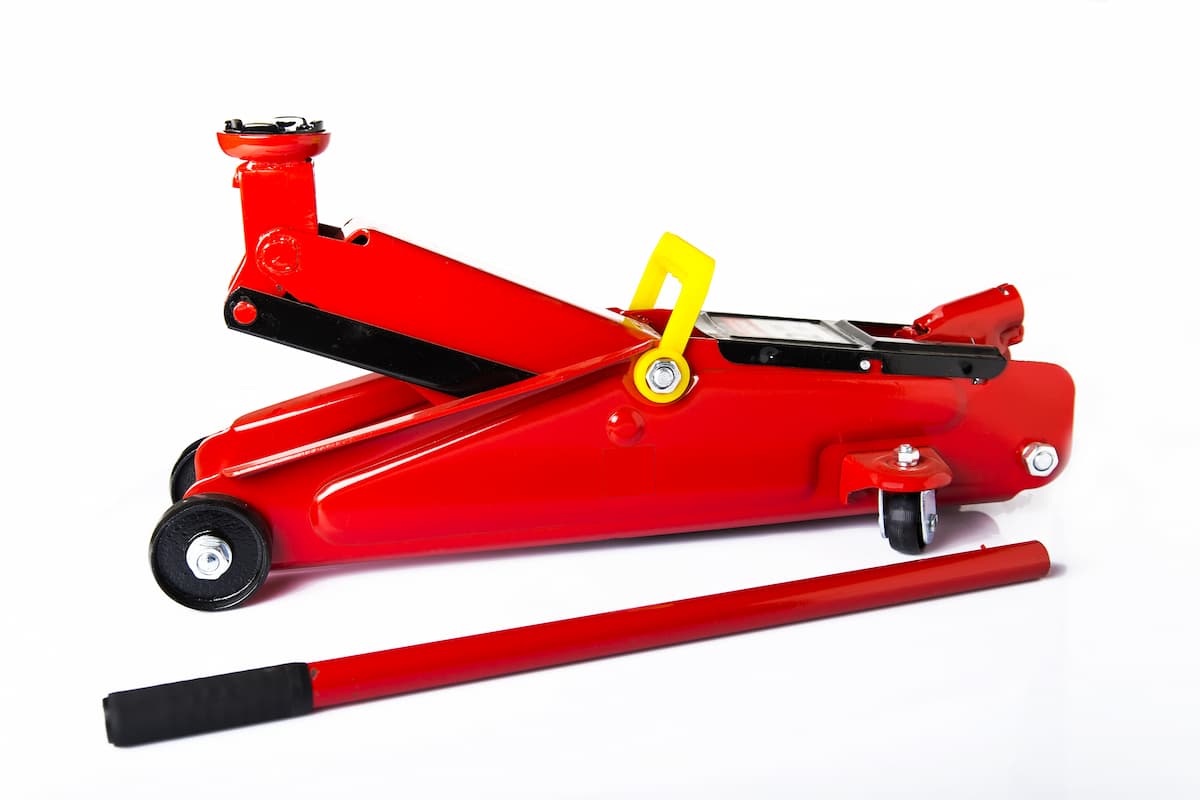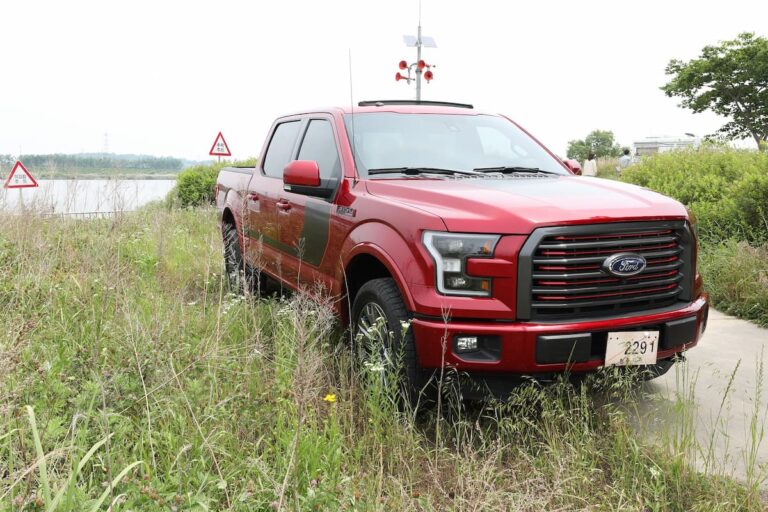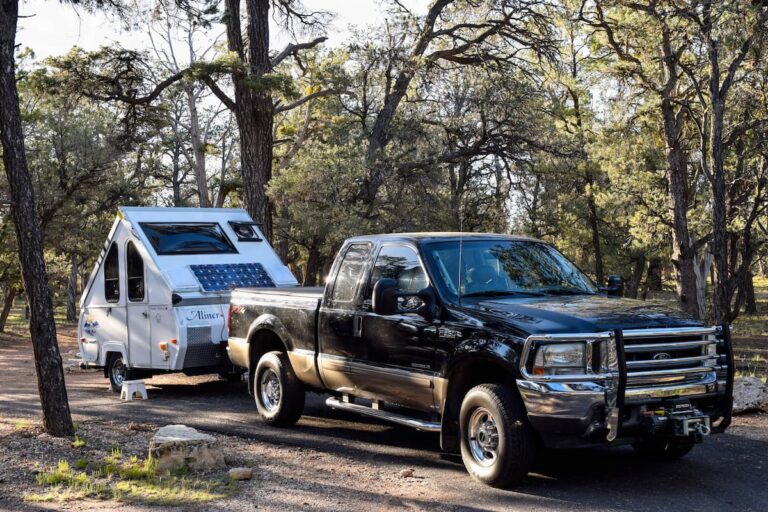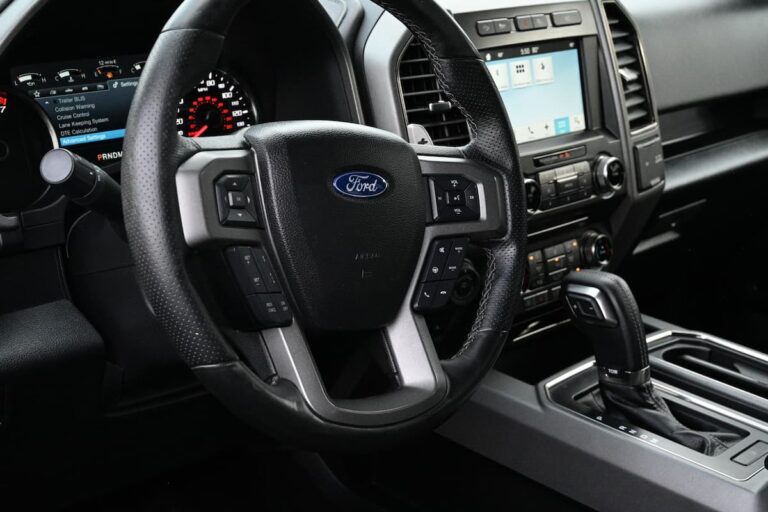What Size Jack For A Ford F-150?
Whether you need to lift your truck for a roadside emergency or routine maintenance, having the right jack is invaluable.
It helps protect your truck from damage and keeps you safe while working on the vehicle.
So what size jack do you need for a Ford F-150?
A 2-ton jack should be sufficient for lifting an F-150 in a roadside emergency, but for work in a garage, a 3-ton jack will be the safer option. 3-ton jacks can lift the truck higher than a 2-ton jack giving you more room to work.
Jacks For Ford F-150s

Jacks are an important part of any roadside emergency kit. Most F-150s come with a 2-ton scissor jack that fits into a slot inside the cab,
These 2-ton jacks are good for emergency roadside adjustments, and are strong enough to raise the truck to get a tire changed.
To use a scissor jack, slide it under the axle of the tire you want to change. (You’ll need the additional bars included with the setup as these turn the gears of the jack.)
Once in position, slowly raise the jack to ensure it fits properly onto the axle before attempting to lift the truck fully.
If it’s secure, you can then jack the truck up a few inches to remove and change the tire.
A good rule of thumb for vehicle jacks is that the jack should be rated for at least three-quarters of the vehicle’s total weight.
In the case of a 4,000-pound F-150 (at a minimum), a 2-ton jack is good but a 3-ton jack is better.
A 3-ton scissor jack is the way to go if you’re concerned about the safety of your 2-ton jack or if you’ve made modifications to your truck that make it significantly heavier.
When it comes to floor jacks, you always want to go larger than necessary. While a 2-ton floor jack will lift the truck, you should consider using a 3-ton floor jack (at a minimum).
Not only does the additional strength provide you with extra safety, but the 3-ton jacks also have a longer reach.
Most 2-ton floor jacks can only lift a vehicle just over a foot (30 cm) above their base. 3-ton floor jacks have a lift height closer to 18 inches (46 cm), which makes maneuvering underneath much safer and easier.
If you’re looking at jack stands or other options, always go for the heftier item. Smaller jacks may do the job, but jack failure can seriously damage the vehicle or, worse, leave you trapped underneath it.
A 2-ton jack is the bare minimum needed for an F-150, but you can always opt for a 4 or 6-ton jack if you want maximum safety.
How to Choose the Right Jack
The first thing to consider when choosing a jack is what you’ll be using it for.
Normal tire changes can be accomplished with a smaller jack since you aren’t lifting the entire vehicle off the ground.
The jack’s size also matters, not just how much it can lift. Emergency jacks need to be small enough to be stored out of the way in the vehicle, so look for smaller models like scissor jacks.
They can fold up to a fairly small size and be easily stored in the vehicle’s trunk or a space built into the frame.
If you want a jack for repairs or maintenance at home, you should opt for floor jacks. They’re safer for use when lifting the vehicle because you can stand farther away.
They also prevent the vehicle from falling, even if the jack fails.
When it comes to how much the jack can lift, you should always pick one that is larger than you need. The additional strength adds an extra layer of safety for you and your vehicle.
Ensure the jack fits your axle, whichever size and type you choose.
It must be large enough for the axle to fit – but not too much bigger. Extra space can encourage the vehicle to shift while it’s lifted, which can cause the jack to fall over or fail.
Finally, you need to consider the lift height of the jack. The size you need depends on the height of your vehicle and its ground clearance.
Ground clearance is the height from the ground to the door frame.
Cars with low ground clearance work best with low-profile jacks.
Most vehicles with average ground clearance will do fine with almost every kind of jack.
Lifted trucks and vehicles with a higher ground clearance need a jack with a higher base.
You should also look into other features that help one jack stand out over the others. A big plus is safety features like an auto-stop that keeps the jack held up even if it fails.
Speed is another factor. How fast can the jack get your vehicle off the ground? Is it easy to use, or does it come with an instruction booklet?
All in all you need a jack that fits your vehicle, can lift your truck, and is a safe option for you.
Conclusion
To hike up an F-150, you’ll need a 2-ton scissor jack, at the very least. This type of jack will give you enough strength and height to at least change a tire.
If you plan to do maintenance on your truck at home, a 3-ton floor jack is a better and safer option.
Go with a 2-ton scissor jack for roadside emergencies and a 3-ton or higher floor jack for your garage at home.
Table of Contents






